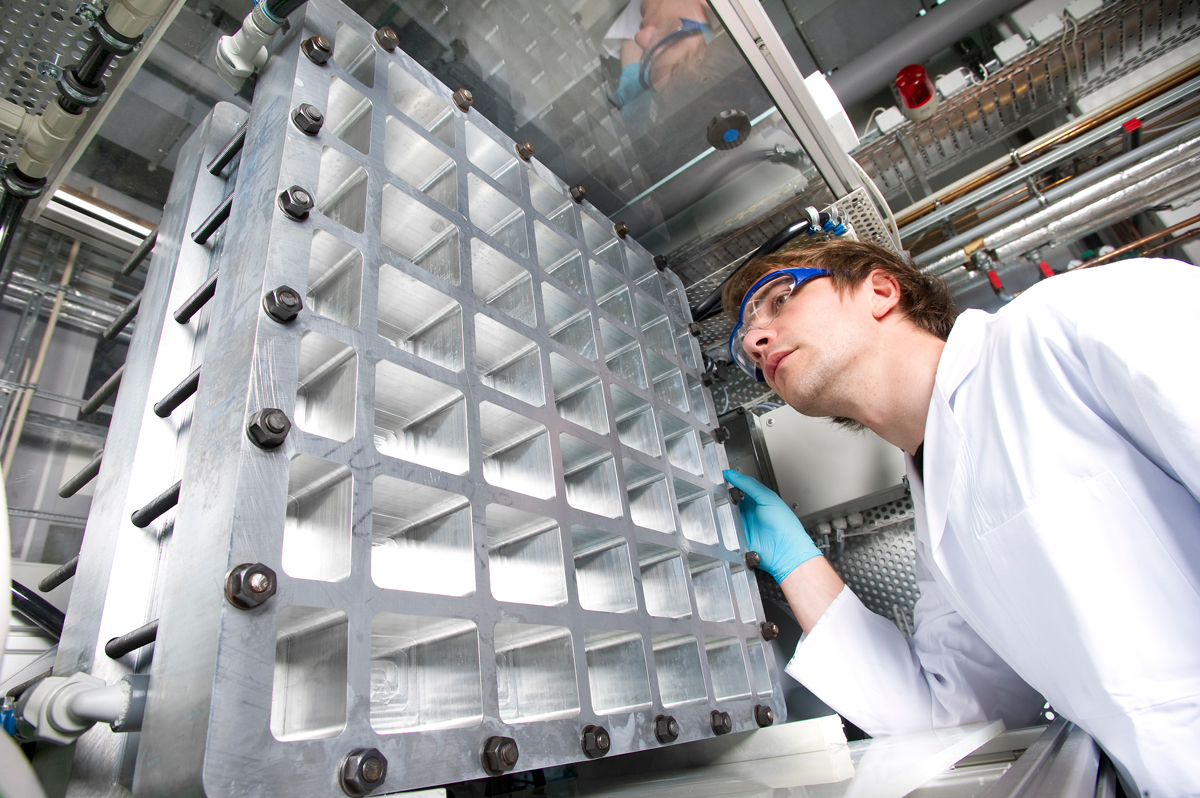| Duration: | June 2010 - February 2013 |
| Contracting Authority/ Sponsors: | German Federal Ministry for the Environment, Nature Conservation and Nuclear Safety (BMU) |
| Project Partners: | Fraunhofer Institute for Chemical Technology ICT, Pfinztal; Fraunhofer Institute for Environmental, Safety, and Energy Technology UMSICHT, Oberhausen |
| Website: | battery-lab.umsicht.fraunhofer.de |
1 MWh Redox Flow Grid-Connected Storage
Development and Optimisation of Redox Flow Batteries

To develop a scalable electricity storage unit with an electric power of 100 kWel and a capacity of 1 MWhel, we are working on the stack and system development and the management of redox flow batteries at Fraunhofer ISE. By applying simulation-supported analysis and design of redox flow batteries, we identify optimisation potential at the cell and stack level and use this to further develop the design. Within the “1 MWh Redox-Flow Netzspeicher” project on grid-connected storage, we have developed an optimised cell stack with a power of 5 kWel for use in mini-grid systems or gridconnected storage systems. Cycling efficiency values of above 80% have been achieved at the stack level. Current research is concentrating on further increasing the power and energy density and reducing the production costs of a 5kWel cell stack.
Fundamental questions for optimisation are answered at the cell level by multiphysical modelling. In this way, we gain deeper understanding of the relevant processes and loss mechanisms. Specific measurements in situ of single cells and ex situ measurements of the electrode, membrane and electrolyte enable the charging and discharging processes to be characterized and the identification of material parameters as an essential data base for modelling and simulation. A fully automated test stand with detailed test log procedures was developed for experimental work on single cells. It is available for comprehensive materials characterization.
This year, the development and test operation of a 5 kWel cell stack was successfully completed. This power class is very suitable for investigating and optimising system-relevant process parameters. Based on the experience gained during this developmental work, we are optimising the stack design further and pursuing alternative cell concepts to increase the power density and reduce the production costs.
Based on the promising results of the development work at the materials, stack and system levels, a grid-connected, redox flow battery system with a power of 5kWel and a capacity of 20 kWh was constructed and taken into operation. Operating data from a field test are currently being recorded and analysed.